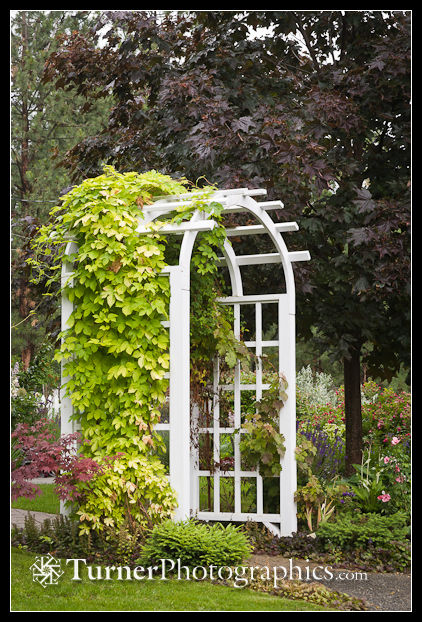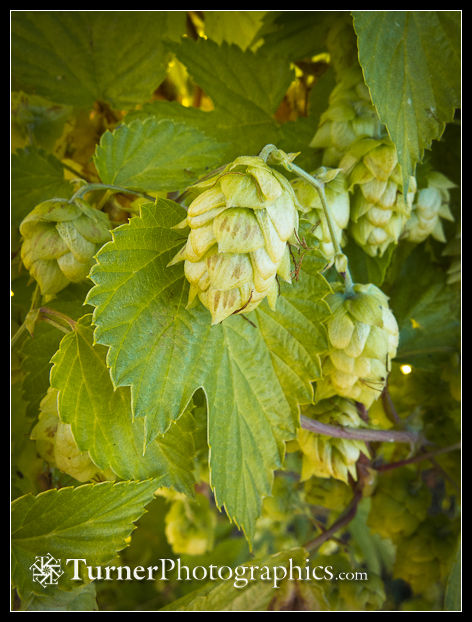Plant of the Month: Golden Hops

We’ve had Golden Hops (Humulus lupulus ‘Aureus’) vines on our vegetable garden fence for over a dozen years now. It’s reliable, hardy, and showy from spring through late fall. It never fails to get comments from pedestrians passing by, particularly this time of year.
Right now our Golden Hops vine is covered with maturing “cones” which sheltered the inconspicuous greenish flowers earlier in the summer. Those cones are what provide the flavor in beer, although Golden Hops isn’t one of the varieties that is particularly flavorful and thus isn’t used much in beermaking. Other varieties of hops, with dark green leaves, are grown for their flavor.
I’m happy to let the commercial growers in the Yakima valley produce the flavorful varieties that go into my favorite craft beers.

All hops are vigorous climbing vines. They need a strong support, like a trellis or fence, which they’ll quickly cover. That makes hops a good screen. Hops vines twine around their support rather than holding on with tendrils as in grapes. Our hops vine grows fifteen feet up the guy wire of a nearby power pole. One year it even headed across the street on the overhead wires.

While hops prefer a reasonable amount of moisture and decent soil, the plants are somewhat drought tolerant. We give our hops very little water during the dry summer months. Golden Hops does best in full sun here in the northwest but may need partial shade in hotter parts of the country to prevent leaf color from bleaching out. Hops are hardy from USDA zone 3 to 8.

Hops die back with the first hard frost. Prune to the ground in the winter. New vines will sprout from the roots in early spring. They have rhizomatous roots, so you may need to do some shovel pruning to keep your hops vines confined to where you want them. For us, it hasn’t been a big deal and they’ve never threatened to take over the garden.

We got our Goden Hops from a gardening friend as a piece of root and a sprout. You can also grow hops from seed or you can root cuttings. The first year the vines won’t do much, but by the third year when the roots are well established you may want to stand back.

